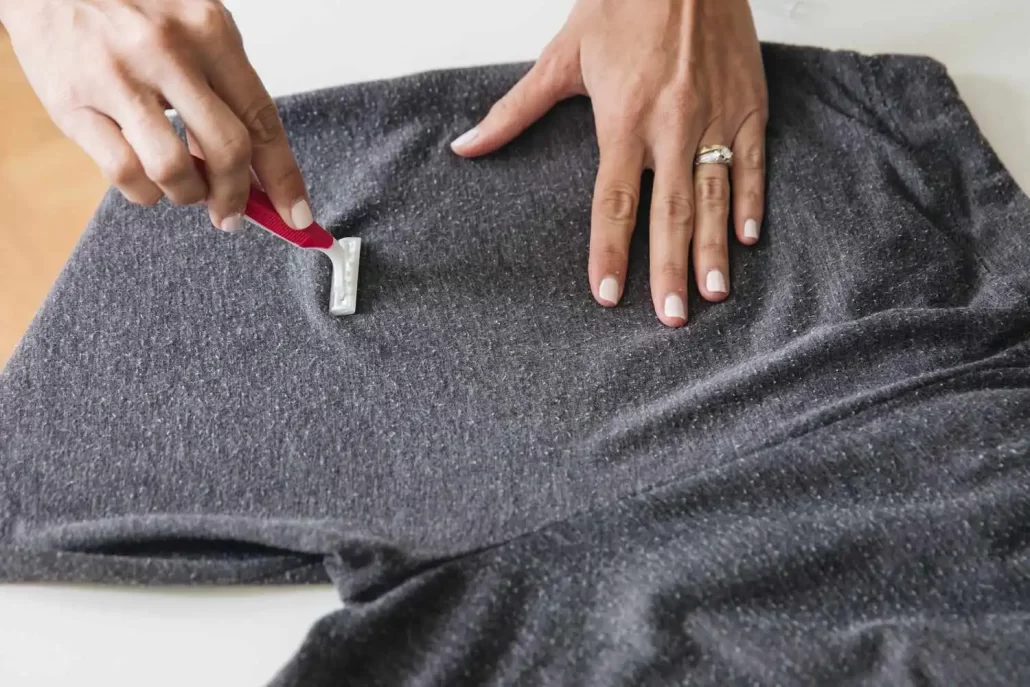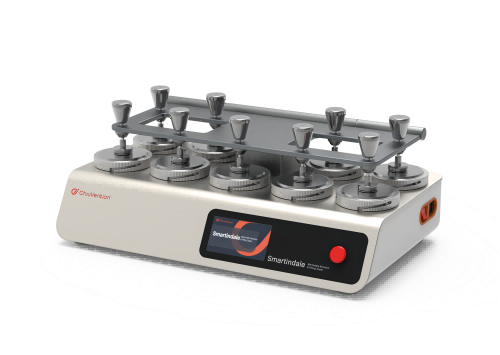The Martindale test method focuses on the pilling resistance of textiles.The Martindale pilling test methods differ significantly between American and Chinese standards. The American standard uses a 38 mm sample. It has a friction path of 60 mm and a load of 198 g, which is the weight of the abrasion head. The Chinese standard uses a 90 mm sample. It has a 60 mm friction path and a total load of 411 g. This load includes an abrasion head weighing 151 g and an extra weight of 260 g.
The Martindale abrasion test is a common method in the textile industry. It checks how well fabrics resist wear. It mimics real-life friction to test how well a fabric resists wear during use. In the test, we rub fabric samples against a standard abrasive material. This is usually woven wool. We do this under controlled conditions. This rubbing shows a Lissajous motion. It involves overlapping circular movements. This motion ensures that all parts of the fabric sample have equal friction.
Standard Test Method for Abrasion Resistance of Textile Fabrics (Martindale Abrasion Tester Method)
Test Method for Pilling Resistance and Surface Changes of Textile Fabrics: Martindale Tester
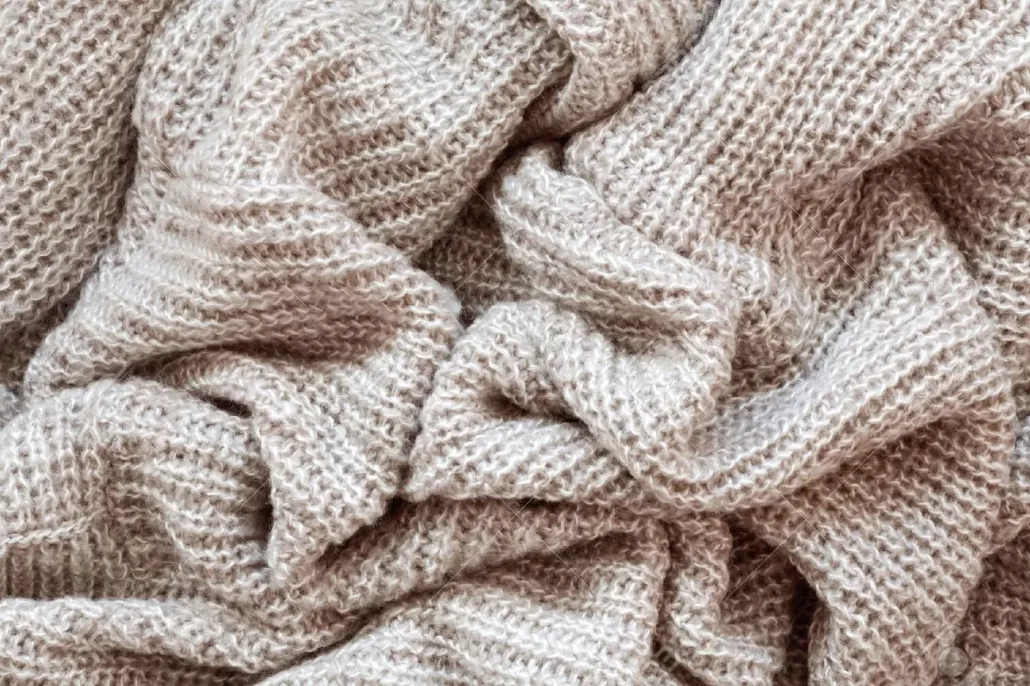
1 Relevant Terms and Requirements
Terminology Relating to Textiles (ASTM D123)
Test for Pilling Resistance and Surface Changes in Textiles: Brush Pilling Tester (ASTM D3511/D3511M)
Test for Pilling Resistance and Surface Changes in Fabrics: Random Tumble Pilling Tester (ASTM D3512/D3512M)
Pilling Resistance and Surface Change Test for Textiles: Elastomeric Pad (ASTM D3514)
Terminology Relating to Fabrics and Fabric Test Methods (ASTM D4850)
Terminology Relating to Glass Fiber and Its Products (ASTM D7018)
Set of 5 Photographic Standards for Random Tumble Pilling Test (ADJD D3512)
1.1 Abrasion Cycle
In abrasion testing, an abrasion cycle means the material goes over the test sample’s surface one or more times. It can also refer to the material moving on the abrasive surface and returning to its starting point.
- The abrasion cycle relies on the machine’s movement and the testing standards used. It can involve one-way movement, like in bending and wear tests. It may also include circular movement, as seen in rotating platform tests. Sometimes, researchers use both types, like in the inflated diaphragm test method. In the oscillating drum abrasion method, one double abrasion is one cycle.
1.2 Lissajous Figure
Combining two simple harmonic motions at right angles forms Lissajous curves. You can see these shapes on an oscilloscope. They help analyze frequency, amplitude, and phase relationships of harmonic variables.
- Related to the Martindale abrasion tester, the Lissajous figure consists of 16 arcs. It starts as a straight line, then forms an expanding ellipse, and narrows back into a straight line.
1.3 Movement
One full turn of the outer gear on the Martindale tester makes one of the 16 arcs in the Lissajous figure.
2 Instruments and Reagents
The instruments and consumables used are as follows:
2.1 Martindale Tester
Uses a 60mm Lissajous figure and has a 38mm sample holder.
2.2 Standard Felt
Weight: 750 g/m² ± 50 g/m² (22 oz/yard² ± 1.5 oz/yard²), Thickness: 3 mm ± 0.3 mm (0.12 in ± 0.01 in)
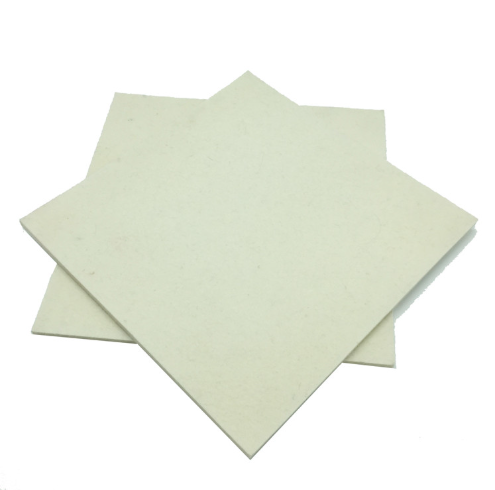
2.3 Polyurethane Foam Backing
Thickness: 3.00 mm ± 0.01 mm (0.12 in ± 0.04 in). Density: 29 kg/m³ to 31 kg/m³ (1.81 lbf/ft³ to 1.94 lbf/ft³). Hardness: 170 N to 210 N (38.23 lbf to 47.22 lbf).
2.4 Apparatus for Fabric Evaluation
The lighting in the facility uses cool white fluorescent tubes. You can view test specimens and compare them to fabric or photo-rating standards at the same time.
2.5 Standard In-House Pilling Test Fabrics
We use fabric with a known pilling grade to check the stability of the instrument. Right now, there’s no global standard for pilling fabric. Labs make their standard fabric depending on the equipment they use.
2.6 Rating Standards
2.6.1 Standard Rating Specimens
We provide a series of tested specimens of a specific fabric type with known grades. Store and handle the standard rating specimens in normal atmospheric conditions. This keeps them in their original state. Secure the standard rating specimens in a rigid cardboard frame for rating.
2.6.2 Photographic Rating Samples
A set of 1 to 5 photographic samples, approximately 105 mm (4.13 in.) wide, indicating the degree of pilling from “severe pilling” to “no pilling,” graded from 1 to 5.
2.6.3 Digital Rating System
A digital imaging or rating system, or both.
2.7 Fabric Punches or Press Cutters
Diameter: 38 mm (1.5 inches) and 140 mm (5.5 inches)
2.8 Facilities for Laundering Samples (if required)
2.9 Facilities for Dry Cleaning Samples (if required)
3 Pilling Resistance Testing Principle
The Pilling Resistance test method relies on lab equipment as its main support. It shows pilling and surface changes, such as fuzzing, that fabrics face with normal wear. The fabric goes on the Martindale Tester. The test sample sits on the abrasion platform. It rubs against the same fabric on the specimen holder. This occurs under a set pressure. The rubbing motion starts with a straight line. Then, it shifts to an expanding ellipse. After that, it narrows back into a straight line in the opposite direction. This pattern repeats under light pressure for a set number of cycles. The rubbing creates pilling and changes on the surface. We compare these with standard visual samples to rate them. These visual standards can be real fabrics or photos of fabrics. They show different levels of pilling resistance. The resistance to pilling is then reported using an arbitrary rating scale.
4 Sampling
4.1 Basic Sampling Unit
Consider the number of fabric rolls or the fabric components as the basic sampling unit.
4.2 Laboratory Sampling Unit
The team takes a full-width fabric sample from the basic unit. It measures 1 meter (1 yard) long. We discard the first 1 meter (1 yard). For fabrics with repeating patterns, use a full repeat of the pattern as the sample.
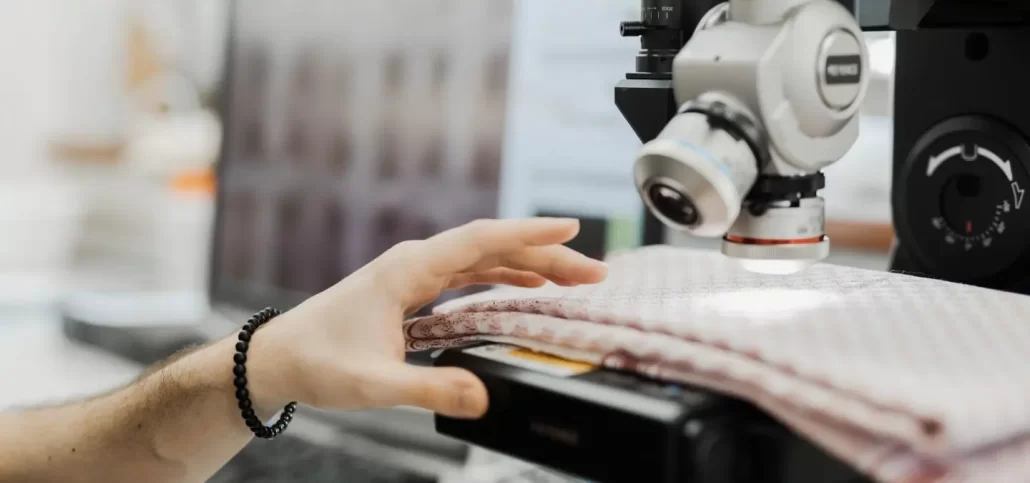
4.3 Pilling Resistance Test Samples: Selection, Quantity, and Preparation
4.3.1 Wash or dry-clean the test samples before sampling unless noted otherwise. The method depends on the fabric’s final use or a mutual agreement.
4.3.2 The lab staff should take four pairs of circular samples from each lab sample. Each pair consists of one sample with a diameter of 140 mm (5.5 in) and one sample with a diameter of 38 mm (1.5 in).
4.3.3 Follow these sampling principles:
Samples should cover the full width of the fabric.
For garments, take samples from both sides.
Ensure each sample has different warp and weft yarns.
Avoid sampling from wrinkled or deformed areas.
Unless stated otherwise, start sampling at least 1/10 of the fabric width from the edge.
5 Pilling Resistance Testing
5.1 Condition the sample for at least 4 hours. It should be in standard atmospheric conditions for textile testing: 21 ± 1°C (70 ± 2°F) and 65 ± 2% RH.
5.2 All pilling resistance testing procedures must follow standard atmospheric conditions for textile testing.
5.3 On each abrasion platform, first, place a 140 mm (5.5 in) felt disc. Then, add a 140 mm test specimen with the fabric face facing out (see Figure 1). Next, put a 38 mm (1.5 in), 3 mm thick polyurethane foam disc on the specimen holder. Add another piece of the same size, making sure the fabric side is facing out.
5.4 Put the specimen holder on the right abrasion platform. Next, insert the spindle into the holder. Then, apply about 3 kPa (0.44 psi) of pressure to the test specimen. Each set of clamping devices applies equal pressure to the sample. They do not use extra pressure, and they do not add weights.
5.5 Start the instrument with the preset number of rotations set to 100 cycles. After finishing the set cycles, raise the rotations by 100 to 1,000. This depends on the sample specs or contract needs. After each set of preset rotations, check the sample’s final rating. Record this according to the instructions in Section 7.
6 Rating
6.1 Place the 38 mm (1.5 in) test specimen in the rating box using double-sided tape.
6.1.1 Use the rating box and the equipment from Table 1. Use standard fabric or photos to test the specimen based on personal judgment. The ratings are as follows:
For Pilling:
5 — No pilling
4 — Slight pilling
3 — Moderate pilling
2 — Severe pilling
1 — Very severe pilling
For Fuzzing:
5 — No fuzzing
4 — Slight fuzzing
3 — Moderate fuzzing
2 — Severe fuzzing
1 — Very severe fuzzing

6.1.1.1 If the pilling resistance test sample is between two standard samples, record a half-grade (e.g., 3.5 or 2.5).
Note 4: Use the equipment and options in Table 1 for arbitration tests. You need at least two rating personnel. Also, keep testing standards consistent to ensure valid results.
6.1.2 Use the appropriate rating standards as agreed upon by both the buyer and seller.
6.1.3 Calculate the average rating results for each specimen and the batch.
6 Precautions
6.1 Key Factors Influencing Pilling and Real-Life Use Considerations
Pilling and fuzzing of textiles are complex. Several factors affect them. These include fiber type, blended fiber, yarn structure, fabric structure, and finishing treatments. In real life, how a fabric pills depends more on how people use it and who wears it than on tests that labs conduct. Keep this experience in mind when choosing acceptable standard levels.
6.2 Impact of Finishing and Importance of Pre- and Post-Treatment Testing
The finishing of fabrics and their surface changes greatly affect pilling and fuzzing. We recommend testing the fabric after washing, dry cleaning, or both. Testing before refurbishing may also be advisable. Pre-agreed terms between the relevant parties should determine the testing conditions.
6.3 Visual Evaluation and Appearance-Based Acceptability
Differences in pilling size and appearance are clear. They depend on the amount of fuzz and how much color contrast there is. When rating only based on the amount of pilling, these factors are not evaluated. Pilling can happen with other surface issues. These include losing the covering, color changes, or fuzz formation. The acceptability of a fabric relies on its pilling and its look. So, it’s best to check the fabric in the lab based on appearance, not pilling alone.
Standards can be set based on the surface changes in the fabric type. This provides a method for rating them based on personal opinions. Visual standards work best when the lab-tested sample looks like the worn fabric. It should show similar amounts of pilling, fuzzing, and fuzz growth. You can do this by counting pilling and fuzzing, then calculating how they relate to size and contrast. This gives a complete view.
6.4 Grading Piling Using Visual Standards
We find the pilling grade of the sample by comparing it to a visual standard. This standard can be real fabric or photos of fabric. The grading scale ranges from 5 to 1 (no pilling to very severe pilling).
6.5 Applicability of the Test Method to Fabric Types
This test method works for many woven and knitted fabrics. It suits fabrics with different pilling performances. Fabrics pill based on several factors. The key factors are the fiber type, yarn, fabric structure, and finishing treatments. This method is not suitable for testing nonwoven fabrics.
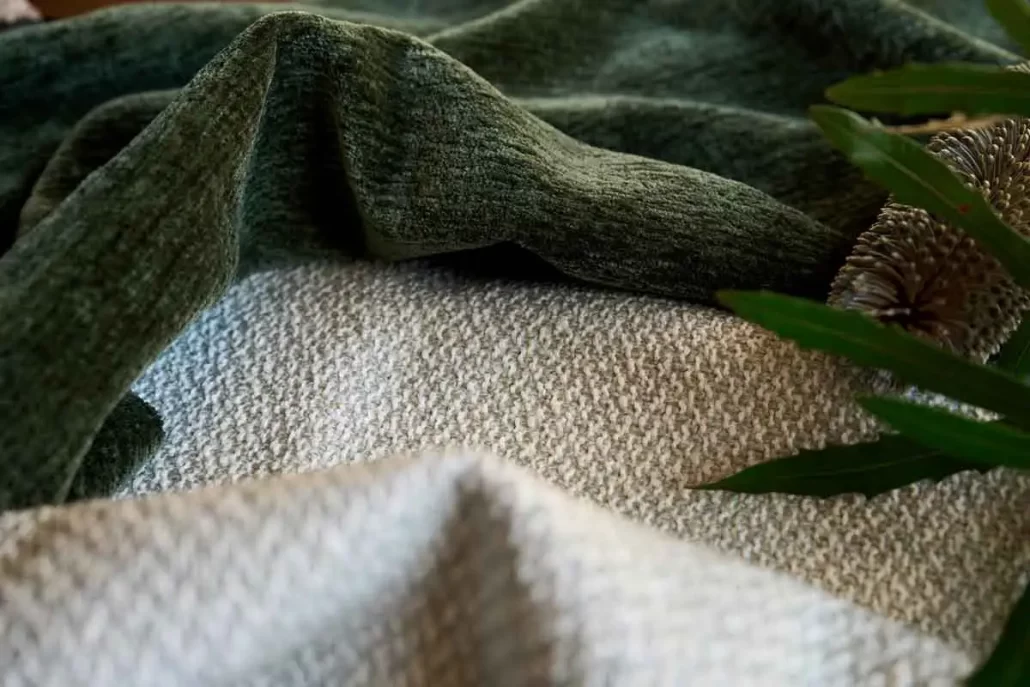
7 Related Standards
GB/T 21196.1-2007
Textiles — Determination of the abrasion resistance of fabrics by the Martindale method — Part 1: Martindale abrasion testing apparatus
GB/T 21196.2-2007
Textiles — Martindale method for measuring fabric abrasion resistance — Part 2: Evaluating specimen breakdown.
GB/T 21196.3-2007
Textiles — Finding the abrasion resistance of fabrics using the Martindale method — Part 3: Measuring mass loss
GB/T 21196.4-2007
Textiles — Martindale method for testing fabric wear resistance — Part 4: Assessing changes in look
GB/T 39507-2020
Leather — Physical and mechanical tests — Determination of abrasion resistance: Martindale ball-plate method
GB/T 19089-2012
Rubber- or plastics-coated fabrics — Determination of abrasion resistance — Martindale method
GB/T 4802.2-2008
Textiles — Finding out how fabrics fuzz and pill — Part 2: Modified Martindale method
JIS L 1096-2010
Japanese Industrial Standard — Testing Methods for Woven and Knitted Fabrics
ISO 12947-1:1998/Cor 1:2002
Textiles — Determination of the Abrasion Resistance of Fabrics by the Martindale Method — Part 1: Martindale Abrasion Testing Apparatus
ISO 12947-2:2016
Textiles — Finding the Abrasion Resistance of Fabrics Using the Martindale Method — Part 2: Assessing Specimen Breakdown
ISO 12947-3:1998/Cor 1:2002
Textiles — Martindale Method for Testing Fabric Abrasion Resistance — Part 3: Mass Loss Measurement
ISO 12947-4:1998/Cor 1:2002
Textiles — Martindale Method: Determining Fabric Abrasion Resistance — Part 4: Assessment of Appearance Changes
ISO 12945-2:2020
Textiles — Testing Fabric for Pilling, Fuzzing, or Matting — Part 2: Modified Martindale Method
BS EN 14325:2018
Protective clothing against chemicals — Test methods and performance classification of chemical protective clothing materials, seams, joints, and assemblages.
BS EN 14465:2004
Textiles — Upholstery fabrics — Specifications and methods of test
BS EN 14605:2005
Protective clothing for liquid chemicals must meet specific performance requirements. This includes clothing with liquid-tight (Type 3) or spray-tight (Type 4) connections. It also covers items that protect only parts of the body (Types PB [3] and PB [4]).
BS EN 15973:2011
Rubber- or plastic-coated fabrics — Upholstery fabrics — Resistance to soiling
EN 16094:2012
Laminate floor coverings — Test method for the determination of micro-scratch resistance.
EN 343:2019
Protective clothing — Protection against rain
EN 388:2003
Protective gloves against mechanical risks.
EN 530:2010
Protective clothing — Abrasion resistance of materials — Test methods
EN 943-1:2015
Protective clothing for liquid and gaseous chemicals includes liquid aerosols and solid particles.
Part 1 covers performance requirements for:
Gas-tight suits (Type 1)
Non-gas-tight suits (Type 2)
EN 943-2:2019
This section covers protective clothing for harmful solids, liquids, and gases, including aerosols. Part 2 explains the standards for gas-tight (Type 1) chemical suits for emergency teams (ET).
EN 13520:2001
Footwear — Test methods for uppers, lining, and insocks — Abrasion resistance
EN 13770:2002
Textiles — Determination of the abrasion resistance of knitted footwear garments
ISO 11856:2014
Textile floor coverings — Methods for testing fiber bind using a Modified Martindale Machine.
ISO 17076-2:2011
Leather — Determination of abrasion resistance — Part 2: Martindale ball-plate method
ISO 17704:2004
Footwear — Test methods for uppers, linings, and insocks — Abrasion resistance
ISO 26082-1:2019
Leather — Physical and mechanical test methods — Part 1: Martindale method for measuring soiling.
ISO 5470-2:2021
Rubber- or plastics-coated fabrics — Determination of abrasion resistance — Part 2: Martindale abrader
IS 12673-1:2014 (Indian National Standard)
Textiles — Part 1: Equipment for Martindale Testing of Fabric Abrasion Resistance.
BS 2543:2004
Upholstery fabrics for end-use applications — Classification
BS 3424-24:1990 (Reconfirmed 1999)
Testing Coated Fabrics — Part 24: Methods 27A and 27B — Measuring Abrasion Resistance.
BS 5690:1991
Method for the determination of abrasion resistance of fabrics
BS 8428:2004 (Reconfirmed 2010)
Protective Clothing
Protection against liquid chemicals
Performance requirements for chemical protective suits
Suits must have liquid-tight connections between parts for emergency teams (Type 3 – ET equipment).
AS 2001.2.25.1-2006 (Australian Standard)
Methods of test for textiles, Method 2.25.1:
Physical tests
Measure abrasion resistance of fabrics
Martindale method
Martindale abrasion-testing device
ISO 17076-2 / IULTCS / IUP 48-2
Leather — Determination of abrasion resistance — Part 2: Martindale ball-plate method
(Jointly published by the International Union of Leather Technologists and Chemists’ Societies — IULTCS)
DTM-40-2002 (IWTO Standard, International Wool Textile Organisation)
Testing Wool and Blended Wool Fabrics for Abrasion Resistance Using a Martindale Machine
M&S P17 / P18C / P19 Series (Marks & Spencer Standards)
Marks & Spencer Abrasion and Pilling Standards — Martindale method (codes for various textile uses)
NEXT TM18 Series / TM26 Series (NEXT Standards)
NEXT internal textile testing standards — Includes abrasion and pilling test methods using Martindale
PV 3975 (Volkswagen Standard)
Scrub resistance of high-gloss surfaces in vehicle interiors — Martindale method
SABS 1009 (Equivalent to ISO 12947-4) — South African National Standard
Abrasion resistance of textile fabrics (Martindale test method)
SFS 4328 (Finnish Standard)
Typically, this refers to textile abrasion or similar properties. The exact title may depend on national standards.
SN 198525 / SN 198529 (Swiss Standards)
Swiss national standards — Used in textile or upholstery abrasion-resistance testing
TWC 112 (Woolmark Company Standard)
Woolmark Performance Testing Standard — Abrasion Resistance of Wool Textiles
VDA 230-211:2008 (German automotive industry standard)
Abrasion test on leather – This test measures how well leather resists abrasion. It uses the Martindale abrasion testing machine and a ball plate.
VDA 230-212:2010
Leather, plastic roll stock, and vehicle textiles — Learn how they get dirty and clean — A method using soiled fabrics.
TWC TM 196 (Woolmark Company Standard)
Martindale Pilling Test for Woolmark-Labeled Wool Products
